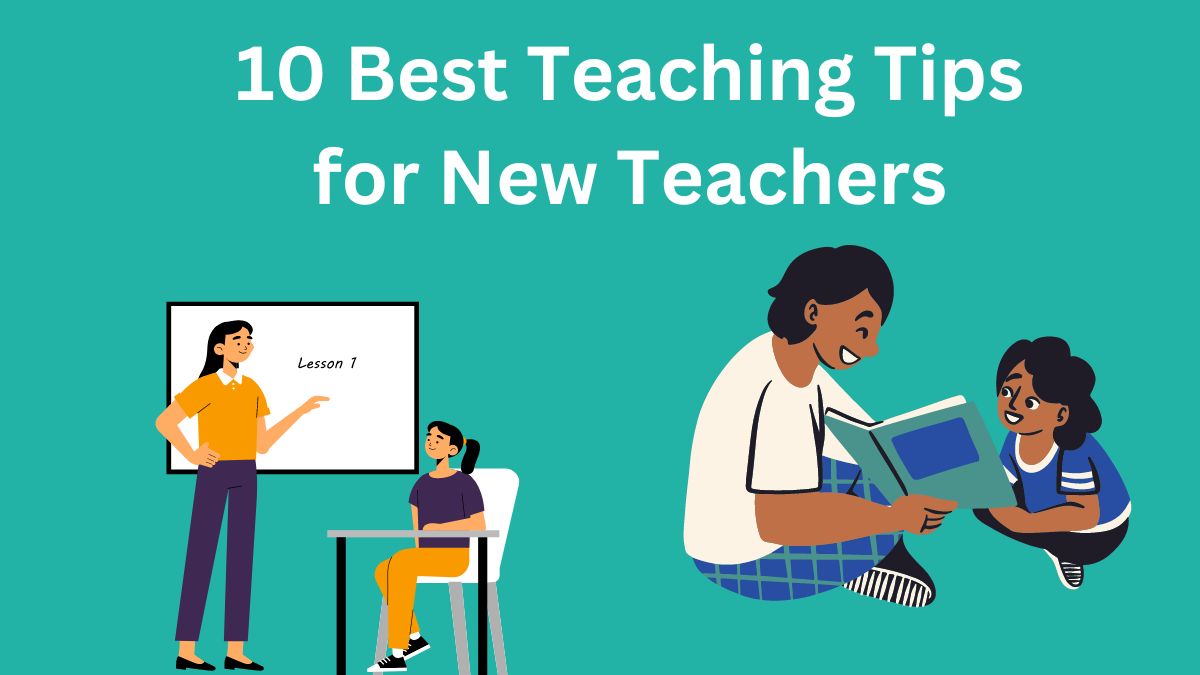10 Best Teaching Tips for New Teachers: Embarking on the path of becoming an effective teacher is not only gratifying but also demands a skill set that goes beyond mere subject matter expertise.
This article presents a comprehensive guide outlining the ten most valuable teaching tips, designed to help new teachers establish a dynamic and effective learning environment. Whether within the confines of the traditional classroom or in the expanse of virtual settings, these tips provide invaluable insight to foster student growth and success.
10 Golden Teaching Tips for New Teachers
Now we will discuss the Best Teaching Tips for New Teachers. Check all the teaching tips given below:
1. Cultivate Positive Relationships
A fundamental step involves creating a positive and inclusive classroom environment by building strong relationships. Novice teachers should devote time to getting to know each student, demonstrate genuine concern for their well-being, and develop an atmosphere of mutual trust.
2. Establish Clear Expectations
Foster discipline and accountability by setting clear expectations from the start. By communicating guidelines for participation, assignments, and evaluation, confusion is reduced, and a structured learning environment takes shape.
3. Instructions to prepare according to various needs
Acknowledge the individuality of learning styles and needs among students. Employ a diverse range of teaching approaches, resources, and assessment methods to meet different abilities, to promote the success of each student.
4. Adopt Active Learning Strategies
Use engagement through active learning methods that immerse students in the learning process. Activities such as group discussions, collaborative problem-solving, and practical projects not only encourage critical thinking but also enhance knowledge retention.
5. Incorporate Technology Wisely
Use technology as an enhancement to learning, not a substitute for effective teaching. Seamlessly incorporate relevant digital resources, educational apps, and online platforms to fuel lessons with dynamism and interactivity.
6. Provide Timely and Constructive Feedback
Giving regular, constructive feedback helps students understand their strengths and areas of development. Balancing formative and summative feedback on assignments and evaluation encourages introspection and self-evaluation.
7. Encourage Active Student Participation
Maintain interest through topics and activities that match student interests and real-world relevance. Encourage open dialogue, debate, and cooperative projects to drive engagement across lessons.
8. Adaptability to Student Needs
Maintain flexibility in your pedagogic approach to meet the growing needs of students. Monitor progress closely and be prepared to make changes to lesson plans or strategies as circumstances warrant.
9. Nurture Critical Thinking
Design lessons that nurture critical thinking skills, including analysis, evaluation, and problem-solving. Ask leading questions and provide opportunities for students to delve deeper into concepts.
10. Reflect and Upgrade
Frequently evaluate teaching methods and consider their effectiveness. Solicit feedback from peers, mentors, and even students, using these insights to refine approaches and facilitate continued growth.
Related Article for Teachers
- 10 Innovative Teaching Methods to Engage Students in 2023
- 11 Best Tips for How to Stop Overthinking
- 10 Powerful Tips to Gain Self-Confidence
- 10 Essential Habits for Successful Teachers
Conclusion
Embarking on the journey of a novice teacher requires a mix of pedagogical skills, empathy, and flexibility. Implementing these ten essential teaching tactics empowers new teachers to create an environment that encourages student growth, engagement, and victory.
As you begin your teaching career, keep in mind that your commitment to growth and dedication to the success of your students will inevitably shape your effectiveness as an educator.
